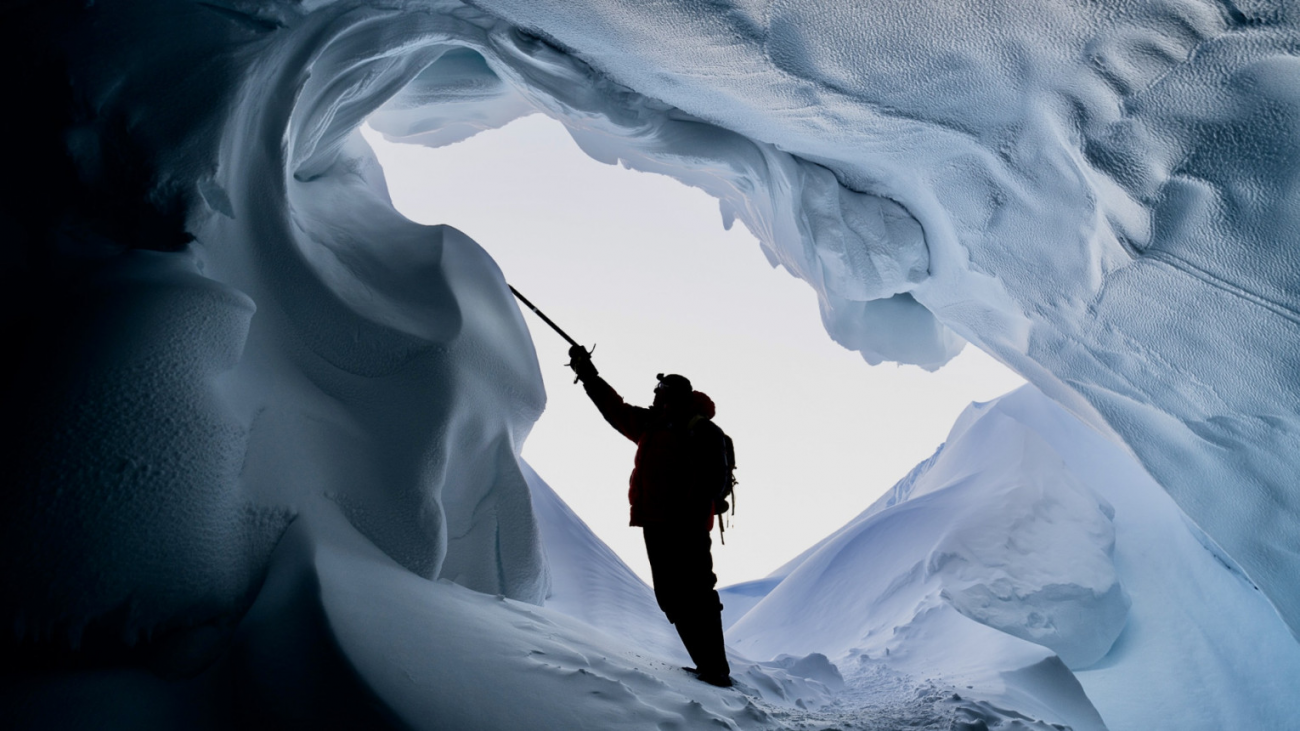
The next Arctic season of the Russian Geographical Society has begun - in 2024 it will last from April to September. As part of the first stage of the expedition to Franz Josef Land in the Russian Arctic National Park, six scientific groups worked in parallel. They deployed a seismic observation network on the island of Alexandra Land, monitored polar bears, explored ice caves and local waters, and assessed the tourism potential of this harsh region. The expedition team launched and tested the seismic station and checked its operation in real time.
The current expedition of the Russian Geographical Society to Franz Josef Land is a continuation of fundamental scientific research that has been carried out on the archipelago since 2021. This year, the expedition group consisted of specialists from the Russian Geographical Society and the Russian Arctic National Park, scientists from the O. Yu. Shmidt Institute of Physics of the Earth RAS, Institute of Geography RAS, A. N. Severtsov Institute of Ecology and Evolution RAS, the Polar Branch of the All-Russian Institute of Fisheries and Oceanography, the Faculty of Geography of M. V. Lomonosov Moscow State University, the Unified Geophysical Service of the RAS.
“Cooperation between the Russian Arctic National Park and the Russian Geographical Society has now reached a fundamentally new level. We have come a long way: from conducting joint expeditions in high-latitude archipelagos to strategic cooperation in the field of researching Arctic ecosystems,” noted the expedition leader, director of the national park Alexander Kirilov. — “In the current geopolitical situation, it is especially important to continue Russia’s Arctic research programs. Strengthening the civil and scientific presence in the Arctic will protect the interests of our country in this region.”
For several years, the Russian Geographical Society, together with the Russian Arctic, has been carrying out systematic work on geology, geophysics, seismology, permafrost science, biology, and hydrometeorology in Franz Josef Land.
“We have been working in these territories that are strategically important for Russia for a long time and systematically. Together with academic partners, the Russian Geographical Society is carrying out fundamental scientific research on the northernmost territory of Russia, assessing its recreational potential,” said Natalia Belyakova, director of the Department of Expedition Activities and Tourism of the Russian Geographical Society. — “To make it convenient for different scientific teams to study Arctic biomes, we began equipping an all-season scientific laboratory of the Russian Geographical Society at the Omega base. We select equipment according to the request of scientists: so that they do not have to take all the equipment with them, but use some of it on site. Our big dream with the Russian Arctic National Park is for the laboratory to become an Arctic office for scientists around the world.”
How seismologists study earthquakes in the Arctic
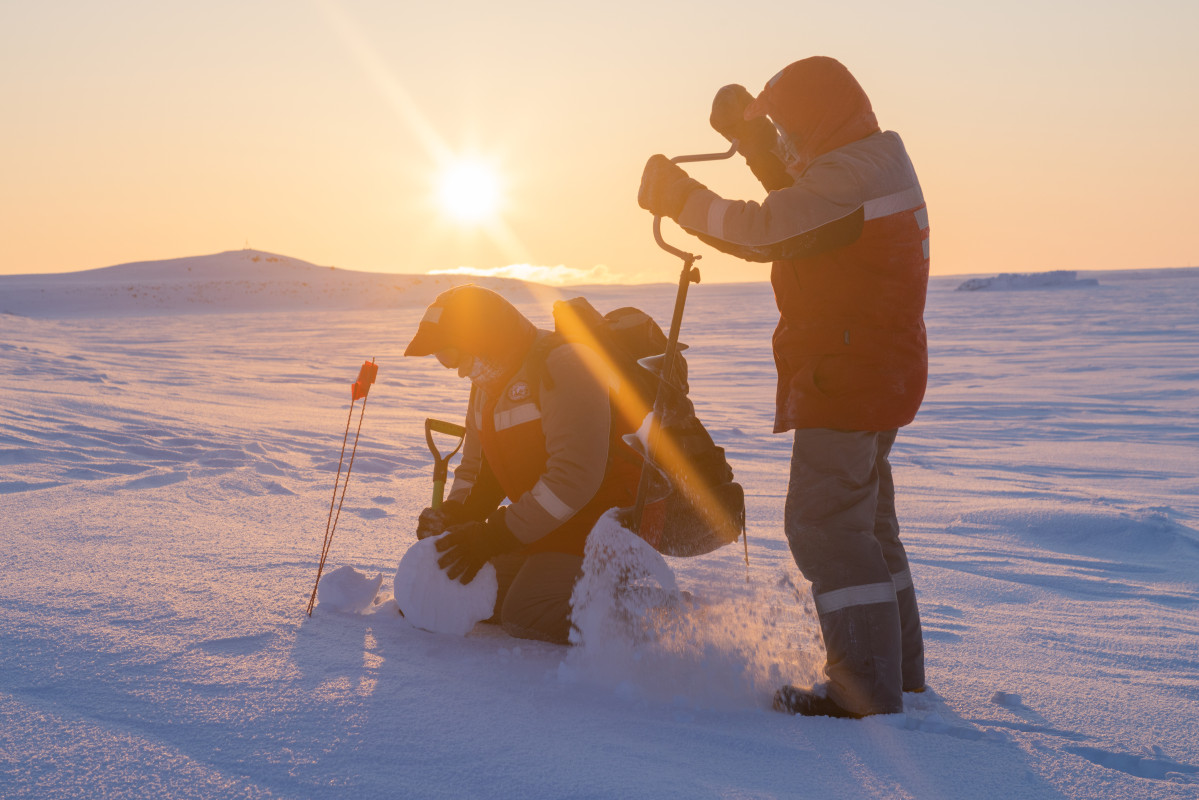
The scientific director of the expedition, corresponding member of the Russian Academy of Sciences Alexey Sobisevich said that in 2021, surface manifestations of a supposedly strong earthquake were discovered on the island of Alexandra Land. Scientists conducted aerial photography of Cape Melekhov, analyzed digital elevation models and orthophotomaps. Based on these materials, the assumptions were confirmed. This year, the expedition team continued field research to clarify the scale of earthquakes in the distant past, study the seismic activity of the archipelago and assess the immediate prospects for the development of the seismic process. Including taking into account global climate change.
“During the polar expedition, employees of the Institute of Earth Physics of the Russian Academy of Sciences deployed a temporary network of seismic observations to study weak local seismicity,” noted Alexey Sobisevich.”Further development of field geological and geophysical research in the Arctic archipelagos, as well as the organization of permanent automated geophysical instrumental observation points are needed to help generate new knowledge about the Earth, including geophysics and seismology.”
The conditions of this season allowed the scientists to accomplish everything planned. This time, research was carried out both on land and on the ice surface. This is the first large-scale test of seismic technology in real conditions.
“We laid three profiles across Cape Dvoinoy not only on land, but also from the ice surface. One ran straight across the cape, and the other a little to the south, parallel to the first. If, when processing the data obtained, the results are similar to each other and to the one that passed on land to the north of the first two, then this will mean that we were able to determine the structure of a seismic fault from the ice surface. This will be a good experimental confirmation of the seismic exploration technology being developed at the Institute of Physical Sciences of the Russian Academy of Sciences,” noted Ruslan Zhostkov, senior researcher at the Institute of Physical and Physical Sciences of the Russian Academy of Sciences, Candidate of Physical and Mathematical Sciences.
This year's research will be the final one on the island of Alexandra Land in geophysical terms. As a result, a scientific article will be published about earthquakes, their nature and factors influencing their development.
Monitoring polar bears - the main predators of the Arctic

In April 2024, scientists examined the bays in Dezhnev Bay - it was necessary to record where exactly the expedition group would encounter polar bears and in what numbers. As a result, 11 different routes were taken around the island, and traces of seven bears were found. The nature of these tracks showed that the animals came ashore from drifting sea ice for a short rest, and then returned to the sea to hunt seals. It was also important to examine the slopes of the bays, which are suitable for polar bears to build their natal dens. These are places where females lie down in late autumn and where cubs are then born. The scientific team found several maternity dens, the exits of females were recorded, but the mothers had not yet given birth due to the cold.
“We noted a small number of polar bears compared to previous years, which can be explained by rather low temperatures in the previous months and during the period of work: from –25 °C to –30 °C,” said the head of the polar bear research work, the presenter Researcher at the Institute of Ecology and Evolution of the Russian Academy of Sciences, Candidate of Biological Sciences Ilya Nikolaevich Mordvintsev. “The result is complete ice constipation, the absence of cracks and gaps in the ice, as well as the almost complete absence of seals in the bays in the south of the island. The small number of natal dens is probably due to the short period of field observations and the lack of snow in early winter, when females lay in dens.”
Ice caves - an indicator of climate change
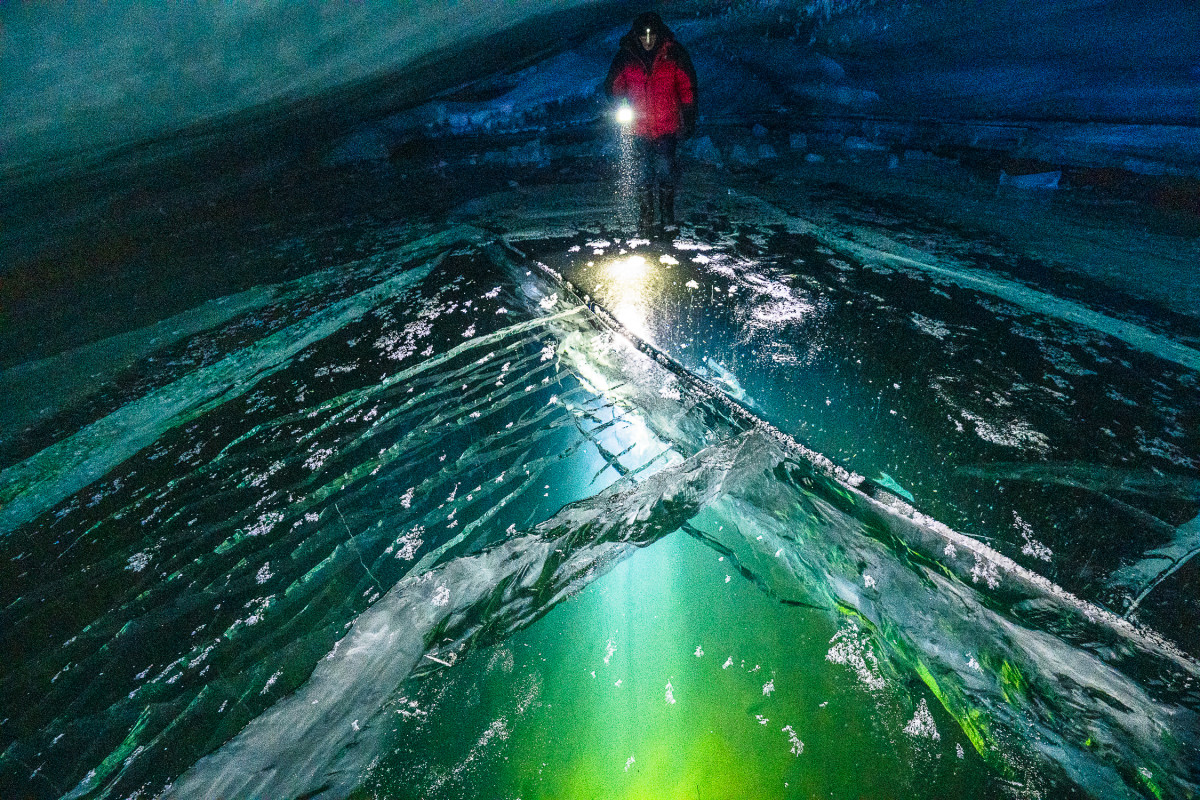
As Bulat Mavlyudov, a senior researcher at the glaciology department at the Institute of Geography of the Russian Academy of Sciences, Candidate of Geographical Sciences, said, this year scientists continued to explore the snow cover and ice caves. This is necessary in order to understand what climate changes will occur in the region in the future. Glacial caves “live their own dynamic life” - they grow, melt, disappear, and in their place mountain valleys and rivers form. As part of this stage, scientific work took place within the boundaries of the Russian Arctic National Park. On this expedition, scientists studied a glacier cave in the Lunar dome.
“Minus temperatures are the best time for research; in summer there is a risk of cave collapse,” noted Bulat Mavlyudov. “We wanted to carry out topographic survey in the cave in the usual format, but this turned out to be impossible - the mountain compass did not work in these conditions and, due to the strong magnetization of the rocks, showed the wrong direction. But it turned out that the GPS tracking worked well inside the cave. Then points were added to this track at which the distance to the walls and the distance to the ceiling were recorded. And, using these points, we have already built a full-fledged plan of the cave. Knowing how the ice cave changes over time, we will be able to understand how the Lunar Ice Dome changes not only from the surface, but also from the inside.”
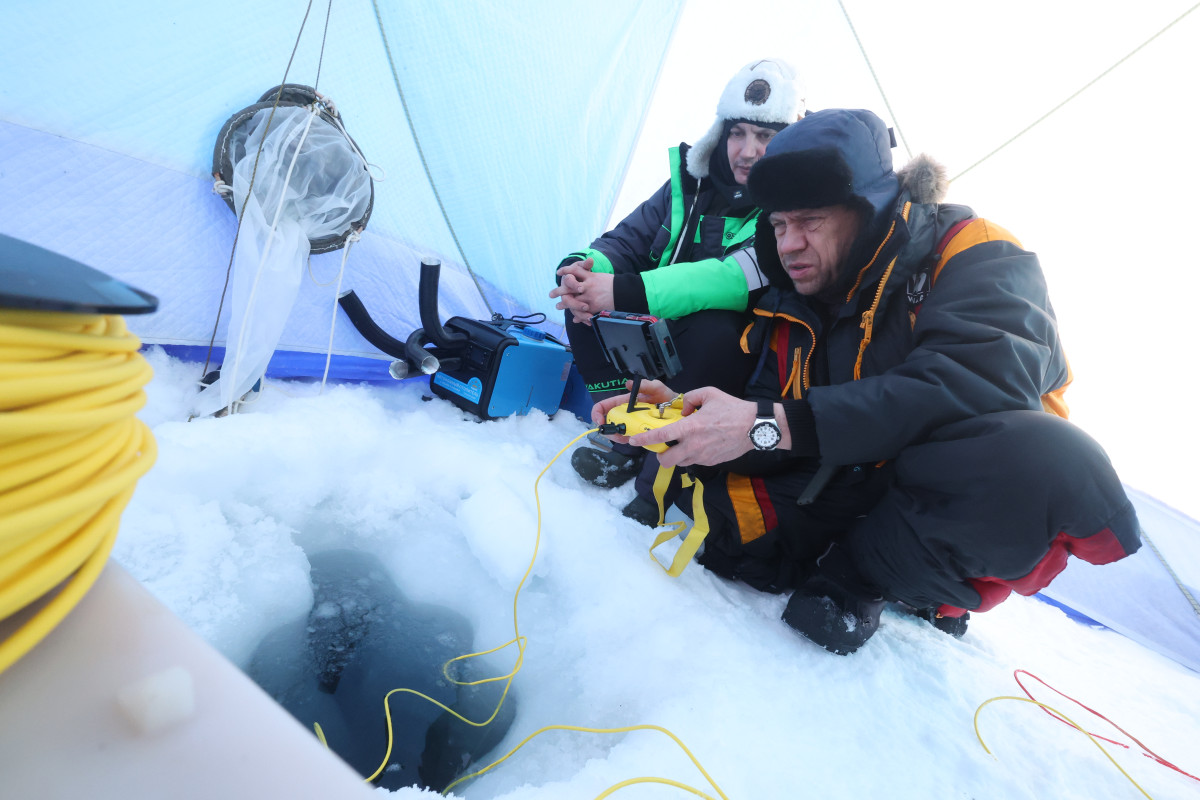
What creatures live underwater at a temperature of –1.6 °C
Another task of the scientists was to see what was happening in the sea waters near the island of Alexandra Land: who was surviving in such harsh conditions. These waters have been studied relatively little in relation to living beings, especially in winter. The temperature of sea water under the ice here in April reaches –1.6 °C and is close to the freezing point. We observed the underwater world of the water area around the island, this time using a drone.
“Our work was carried out from the ice: several holes were drilled, from which a large polynya was created,” said Konstantin Sokolov, deputy head of the Polar Branch of VNIRO, Candidate of Biological Sciences. “Observations underwater were conducted using remote underwater instruments, including a special drone that is capable of descending to depth. We used it to make videos and photos. It can be considered that it was our eyes, which saw everything that was under the ice and at the bottom. The resulting materials even make it possible to count animals. For example, echinoderms, including sea urchins, sea anemones and brown algae, are distributed en masse there. There are very few fish - we observed only two individuals: a scaled sculpin and an Arctic staghorn sculpin. At one of the sites, numerous crustacean animals were noted - temistos, living under the ice, in the dark. We also measured the temperature and salinity of water, the thickness of ice and snow cover, took water samples for subsequent assessment of phytoplankton and pollutants, and collected zooplankton with a special net.”
However, according to the scientist, there were no commercial fish in the harsh Arctic waters of Franz Josef Land in April. But in general, the subtidal ecosystem is characterized by high species diversity, significant numbers and biomass.
Developing tourism in Franz Josef Land
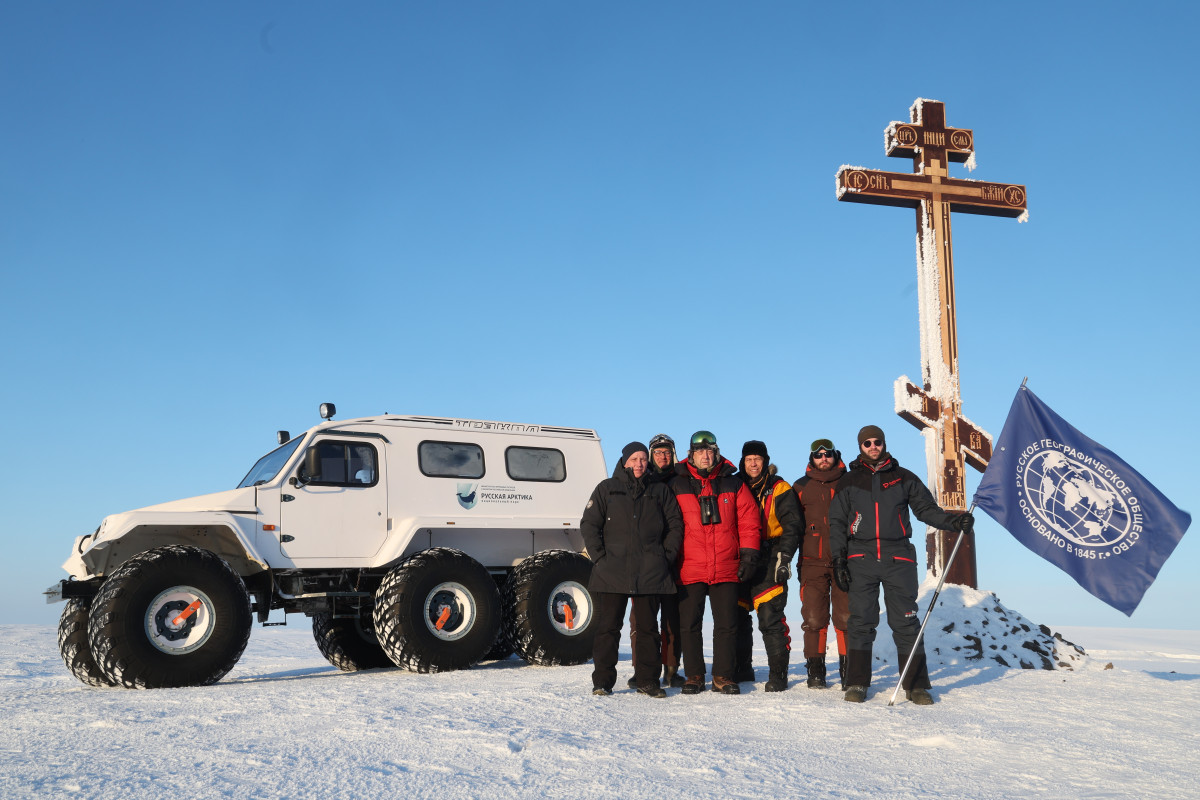
The Arctic is a potentially popular region for travelers. However, due to the geographical remoteness and harsh climatic conditions, the scenario for the development of tourism in Franz Josef Land can only develop positively if several conditions are met. The most important thing is to improve the transport and tourism infrastructure. As Alexandra Nikanorova, senior researcher at the Faculty of Geography of Moscow State University, Candidate of Geographical Sciences, said, for this purpose, special attention should be paid to the development of civil aviation in the high-latitude Arctic. This will help improve accessibility to the region and reduce the time tourists spend getting to remote areas. To expand Arctic cruise routes across the archipelagos of the Arctic Ocean, including Franz Josef Land, new civilian ice-class vessels and technologically advanced Russian-made icebreakers should appear. These measures will increase the tourist flow and make a tourist’s stay in the Russian Arctic more comfortable.
“It is important to create infrastructure for the development of nature-oriented types of tourism. The solution to the issue of modernization and construction of new visitor centers to form the supporting tourist framework of the national park remains a key issue. Particular attention should be paid to developing a unique travel concept that will give tourists an unforgettable and comfortable Arctic experience,” added Alexandra Nikanorova.
The Russian Geographical Society is already inviting everyone to try a new format of travel in the concept of civic science and popular science tourism. Even if you are not a professional scientist, you can come to the archipelago with the Russian Geographical Society expedition and help in research by joining their scientific groups and performing simple scientific tasks under the guidance of experienced mentors.
Related materials:
EC Arctic: "Russian scientists fear for the fate of many mammals. Bears and walruses are being exterminated by poachers"
